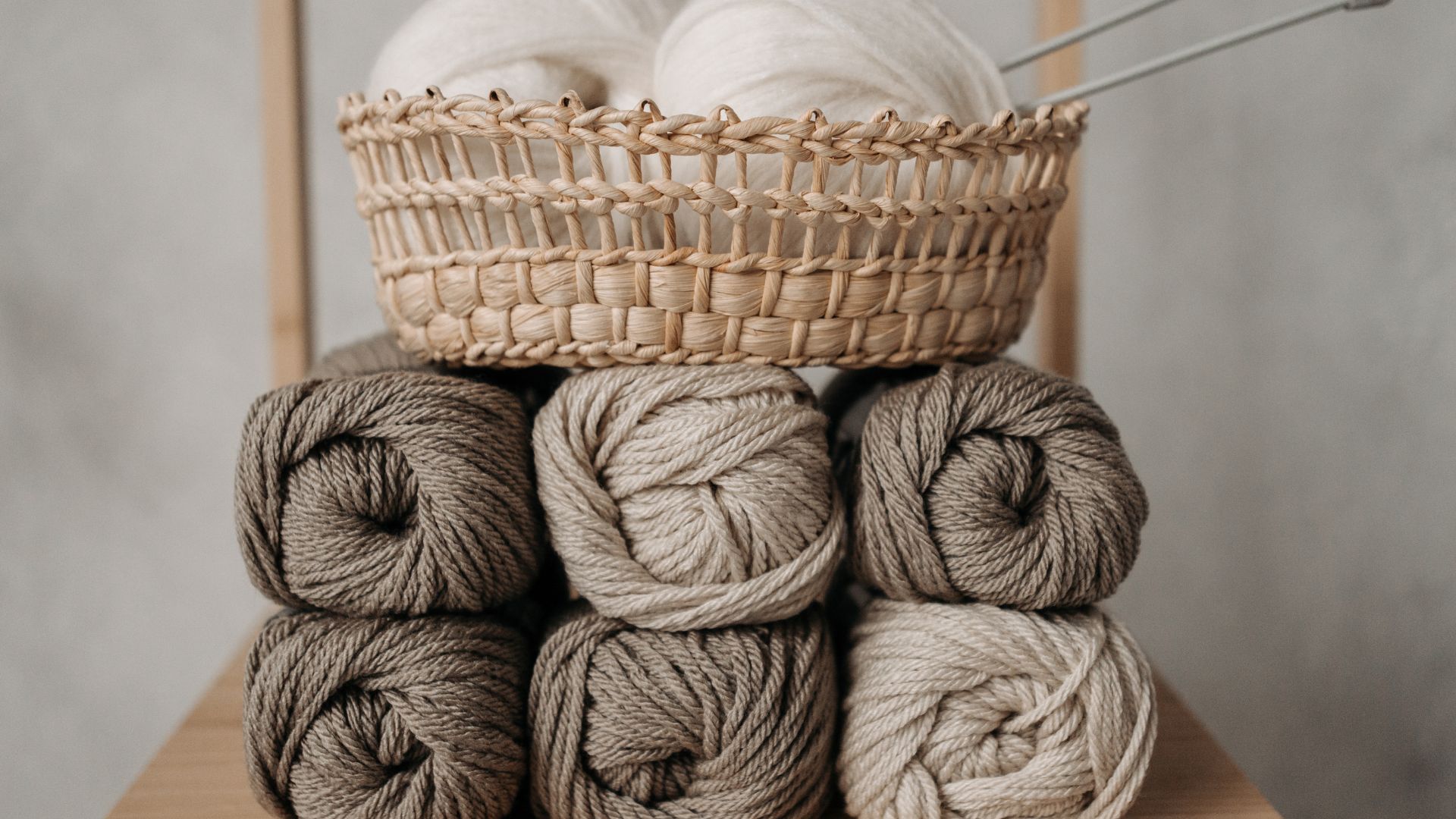Knitting is a delightful craft that allows for creativity and expression, but at times, dealing with yarn curling can be frustrating.
Whether you’re a seasoned knitter or a beginner, understanding the relationship between yarn types and their tendency to cause curling in knitting projects can significantly impact your final creation.
Introduction to Yarn Curling
Yarn curling occurs when the edges of a knitted piece naturally roll inward or outward, deviating from a flat or intended shape. This phenomenon primarily happens due to the combination of knitting tension, stitch patterns, and yarn characteristics. Some yarn types are more prone to causing curling due to their specific properties.
Why Certain Yarns Cause More Curling
Animal Fiber Yarns:
Yarns made from animal fibers like wool or alpaca often possess elasticity and memory, which can contribute to curling. While this elasticity is beneficial for various knitting projects, it can also lead to curling tendencies, especially if the yarn is knit in a pattern that encourages it.
Smooth vs. Textured Yarns:
Smooth yarns, such as those made from cotton or silk, have less elasticity and memory compared to textured yarns like bouclé or chenille. Textured yarns tend to have more inherent curl due to their construction, making them more likely to cause curling in a project.

Single-Ply Yarns:
Yarns spun in a single ply without additional twist can have a higher propensity to curl. The lack of structure in single-ply yarns allows them to twist and bend more readily, contributing to the curling effect.
Managing Curling with Yarn Selection and Techniques
While certain yarns might have a tendency to curl, several techniques and yarn choices can mitigate this issue:
Yarn Selection Tips to Minimize Curling:
- Blended Yarns: Opt for yarns that combine fibers with different properties. Blends with a bit of synthetic fiber or nylon tend to reduce curling.
- Yarn Weight: Consider using a heavier weight yarn or adjusting needle size to counteract curling. Experimenting with different yarn weights can help find the right balance for your project.
- Blocking: After completing your project, blocking the finished piece by wetting or steaming and then shaping it flat can significantly reduce curling.
So,…
Understanding the characteristics of different yarn types and their potential to cause curling in knitting projects empowers crafters to make informed choices. By selecting the appropriate yarn and employing specific techniques, you can minimize curling and enhance the quality of your knitted creations.
Resources:
- Understanding Yarn: A Guide for Beginners – Craft Yarn Council
- The Influence of Yarn Properties on Knitting and Crocheting – Textile Learner
- The Ultimate Guide to Blocking Knits – Tin Can Knits Blog
Moving forward
While certain yarn types may tend to curl, with practice and exploration, you’ll discover techniques and yarn combinations that perfectly complement your knitting style, resulting in beautifully finished projects without excessive curling.
Techniques to Tackle Curling in Knitting Projects
Beyond yarn selection, various knitting techniques can be employed to combat curling and achieve a smoother, flatter finish for your projects.
Stitch Patterns
- Ribbing: Incorporating ribbing, such as knit-one-purl-one (K1, P1) or knit-two-purl-two (K2, P2), along the edges of your project can help prevent curling. The alternating knit and purl stitches create a structured border that resists curling.
- Garter Stitch Edges: Using garter stitch, where every row consists of knit stitches, along the edges can counteract curling. The garter stitch naturally lays flat and can serve as a border for your main pattern.
Edge Treatments
- Slip Stitch Edges: Adding slip stitches at the beginning or end of rows can create a neat, flat edge that discourages curling. By slipping the first stitch of each row knitwise or purlwise, a tidy edge is formed.
- Adding Borders: Incorporating an additional border, like a few rows of seed stitch or a simple stockinette border, can stabilize the edges and minimize curling.
Blocking Techniques
- Wet Blocking: After completing your project, gently soak it in lukewarm water with a mild detergent. Gently press out excess water and lay it flat to dry, shaping it as needed. Wet blocking helps relax the fibers and set the stitches, reducing curling.
- Steam Blocking: Using a steam iron or garment steamer, hover over the knitted piece without touching it directly, allowing the steam to penetrate the fibers. Be cautious not to apply too much heat, as it can damage certain yarns. Then, shape the piece and let it cool.
Additional Tips
- Tension Control: Maintaining consistent tension while knitting can influence the curling effect. Experiment with your knitting tension to find a balance that minimizes curling.
- Experimentation: Not all yarns or stitch patterns react the same way to curling. Don’t hesitate to swatch different yarns and stitch combinations to find what works best for your specific project.
Conclusion
Managing curling in knitting projects involves a combination of thoughtful yarn selection, employing suitable stitch patterns, edge treatments, and applying blocking techniques. By understanding how different yarns behave and experimenting with various knitting methods, you can create beautifully finished pieces while minimizing unwanted curling.
Remember, each project might require a unique approach, and practice is key to mastering the art of reducing curling in your knitted creations. Enjoy the journey of knitting and the satisfaction of overcoming challenges to create stunning pieces!
Resources:
- How to Block Your Knitting – Vogue Knitting
- The Magic of Slip Stitch Edges – Interweave
- The Garter Stitch: How to Knit It and Why You Should – Craftsy
Comparison tabular
Here’s a tabular comparison of different yarn types and their tendencies regarding curling in knitting projects:
| Yarn Type | Curling Tendency | Characteristics |
|---|---|---|
| Wool | Moderate | Elastic, good memory |
| Cotton | Low | Less elastic, smoother texture |
| Acrylic | Low to Moderate | Varies based on blend and construction |
| Alpaca | Moderate | Soft, slightly less elastic than wool |
| Silk | Low | Smooth, less elasticity |
| Mohair | Moderate | Fuzzy, can contribute to curling |
| Linen | Low | Stiff, little elasticity |
| Nylon Blend | Low to Moderate | Enhanced durability, reduces curling in some blends |
| Single-Ply Yarns | Higher | Less structured, prone to twisting and curling |
| Textured Yarns | Moderate to High | Bouclé, chenille, and similar textures tend to curl more |
This table provides an overview of various yarn types commonly used in knitting projects and their general tendencies regarding curling. Keep in mind that individual yarn brands and blends may behave differently, so experimenting with different yarns and techniques is key to finding the best solution for your specific project.
Final words
In the vibrant world of knitting, understanding the nuances of yarn types and their impact on curling empowers crafters to create stunning, polished projects. While certain yarns may have tendencies to curl, this shouldn’t hinder your creativity or passion for knitting.
By exploring diverse yarn textures, employing specific stitch patterns, and utilizing blocking techniques, you can confidently tackle curling and achieve beautifully finished pieces. Remember, each project is an opportunity to experiment and learn, and finding the perfect combination of yarn and techniques is part of the joy of knitting.
Embrace the process, enjoy the rhythmic clicking of your needles, and relish the satisfaction of transforming yarn into something extraordinary. Happy knitting, and may your projects be filled with creativity, warmth, and endless inspiration.

For over a decade, I’ve been Mike, an artist, crafter, and designer deeply immersed in the Croc world. I thrive on crafting unique, size-inclusive patterns, fostering creativity, and sharing them on ktforum.com. My designs aim to ignite your creative spark and delight you, ensuring clarity and ease of use through rigorous testing. Join me in expressing your creative flair and showcasing your craft with joy.
Related Posts
- Understanding How Blocking Reduces the Curling Effect in Knitting
Knitting is a beautiful craft that rewards patience and skill. Yet, the final piece doesn't…
- Can You Block Acrylic Yarn? Understanding the Basics
Acrylic yarn is a popular choice among knitters and crocheters due to its affordability, durability,…
- Why crochet project curling: Understanding Why Your Crochet Project Is Curling
Crocheting is a delightful craft that allows you to create beautiful pieces, but sometimes, you…
- Understanding Curling in Crochet Chains: Causes and Solutions
Crochet is a fantastic craft that allows you to create beautiful patterns and designs using…

